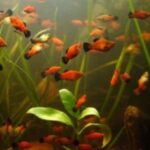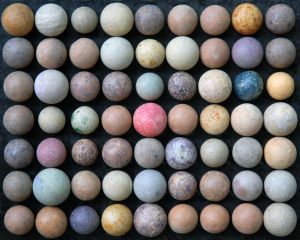Corals hail from the Caribbean, Indo-Pacific and Atlantic Ocean. They provide a home, food and protection for fish and invertebrates in the reefs of the world as well as in the home aquaria. Moreover, with the numerous species of coral available in the marine hobby, diversity and uniqueness have become commonplace. Aquarists have become fascinated by corals, especially over the past few years, often striving to expand their aquariums bioload while setting higher standards by incorporating various species of corals within the realm of their small recreation of one of life’s great wonders, the coral reef. With the desire to accrue various species of corals in a closed system marine aquarium, comes the need to understand each individual corals vital food and nutrition requirements that will help satisfy their needs for health, extensive growth and reproduction. My many years of experience in the marine hobby, hopefully, will offer fellow conscientious aquarists with the beneficial information regarding proper nutrition for corals while not altering ideal water parameters.
It isn’t an exact science when it comes to corals and providing food for them. All too often, corals are fed a hodge podge of food stuff that don’t specify their dietary needs, ultimately causing them to be neglected one way or another. The more is better approach to feeding, often times, breaks the delicate balance we so deliberately try to achieve within our marine aquarium. Because of this many aquarists are left scratching their heads while wondering why some of their corals don’t look like they do in pictures or even look different from the other day. Polyps not expanding, tissue receding or bleaching, polyps releasing zooxanthelae and colors fading all can be a tell tale sign that something is not right in reefland, and it could be associated with your feeding regimine.
Determining the type and micron size of the food that a particular coral feeds upon is very beneficial, however, knowing if your coral is symbiotic or aposymbiotic may be the bigger question. You see, many corals can’t rely on a light source to provide them with energy. The reason being is that they don’t contain single celled organisms called zooxanthellae living within their host corals tissue. Because of this, target feeding or adding brine shrimp, mysis shrimp or some type of plankton or copopod based food to your water is going to have to be implemented. Then, their are the symbiotic corals that do contain zooxanthellae in their tissue. Zooxanthellae require light to carry out photosynthesis much in the same way as trees do. Photosynthesis is a process where photosynthetic organisms take in carbon dioxide and release oxygen. Light furnishes zooxanthellae with a nutrient source. Living within a corals tissue provides the zooxanthellae protection, shelter and nutrients mainly as phosphorus and nitrogen and a constant supply of carbon dioxide which in turn provides energy to the corals via a carbon source in the form of glucose, glycerol and amino acids, which are products of photosynthesis.
All to often, I have heard aquarists saying they feed their reef tank with a liquid zooplankton or phytoplankton food and then I will ask them what kinds of corals. Unfortunately, the list of corals they name don’t require that type of food. The same holds true for aquarists dosing calcium and strontium supplements when they have just a couple of soft corals in their tanks. This is how many aquarists get in trouble. Trying to do too much or neglecting to spend the time, necessary to research the subject before delving into it, can play out unfavorably in a marine aquarium leading you down the path to disaster.
Not only can these types of inexplicable behavior be a hindrance as far as water quality issues are concerned, they can also be a waste of time not to mention strain on your wallet or pocketbook.
To be honest with you, many of our aquariums provide ample food to support most of the living animals that reside in our aquariums, without having to add anything. Think about it for a minute. How many of you have phosphates in your water? How about nitrates higher than 25 ppm? Do you have some form of algae growing on your live rock or glass? Dissolved organics, Gelbstoff, food added to aquariums to satisfy fish and invertebrate needs, various pod populations, microcrustaceans, polychaete worms and detritus, all provide nutrients to the plethora of life within the confines of the four sides of glass or acrylic making up our aquariums. A mature aquarium housing live sand and rock can provide the foundation for many fish, invertebrate and coral population. Combine this with the myriad of lighting scenarios available to us now and the amount and types of corals we can maintain successfully in a marine aquarium is endless. The key is knowing when to say when, knowing if we are over thinking or not thinking enough. Human error, all too often, ends up destroying the synergy that a marine aquarium is suppose to represent. Just like the old saying ” you can never have enough filtration”, you can also add, “you will never have all the information needed for success with a marine aquarium without research and dedication.
The next time you’re in the market for a new coral, spend the time to familiarize yourself with husbandry issues like what its food requirements consist of. Your coral will thank you for it and it could help pave the way for the maintenance of a healthy, thriving aquarium for a long time to come.





